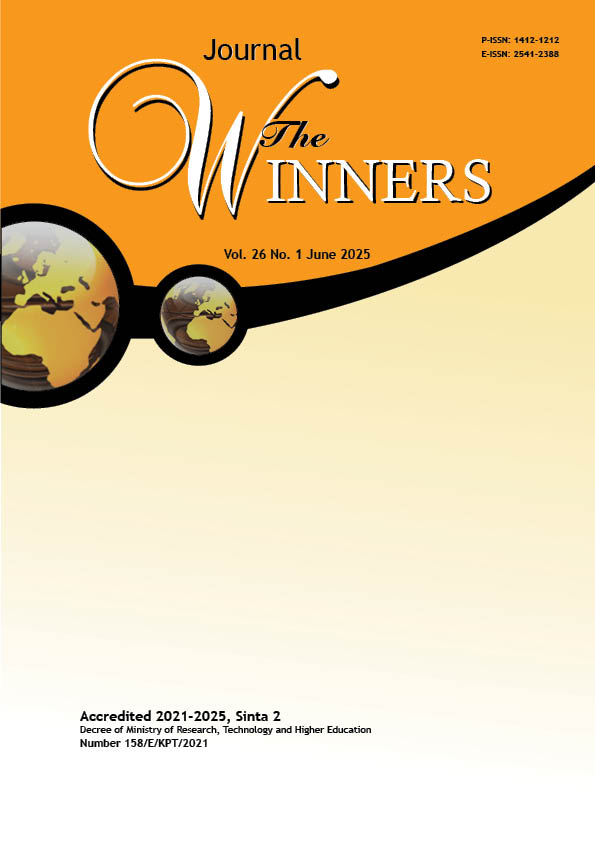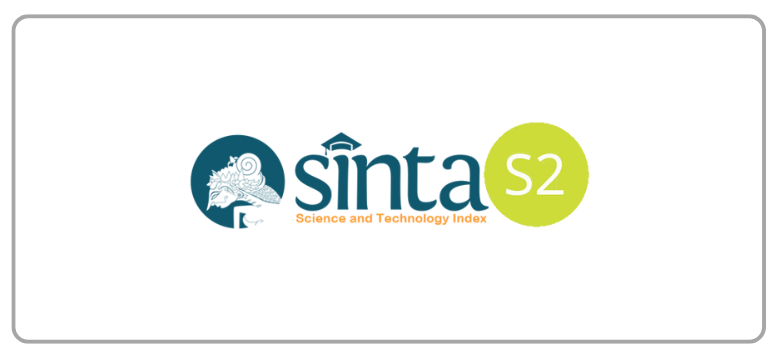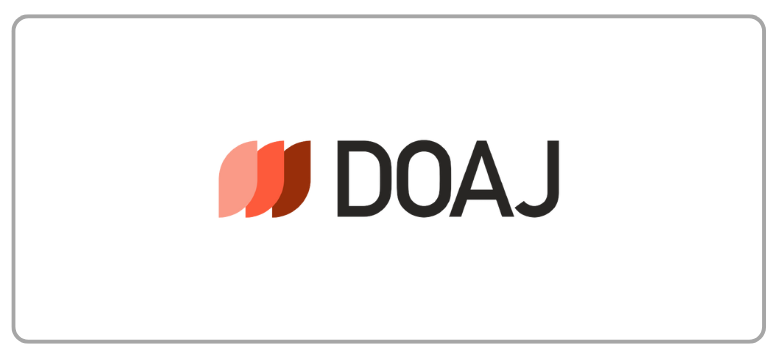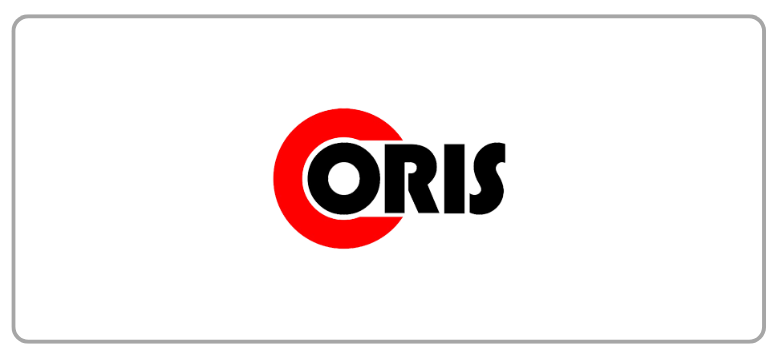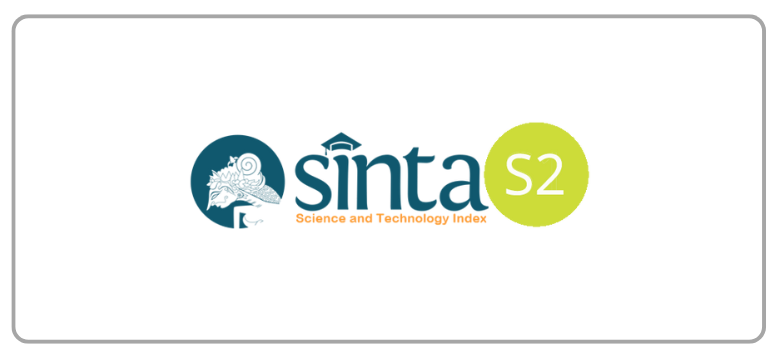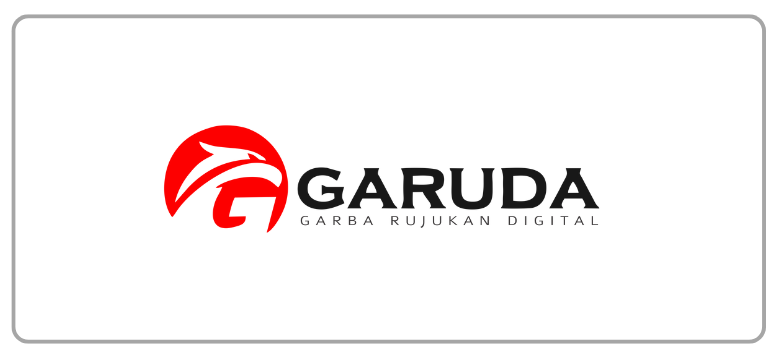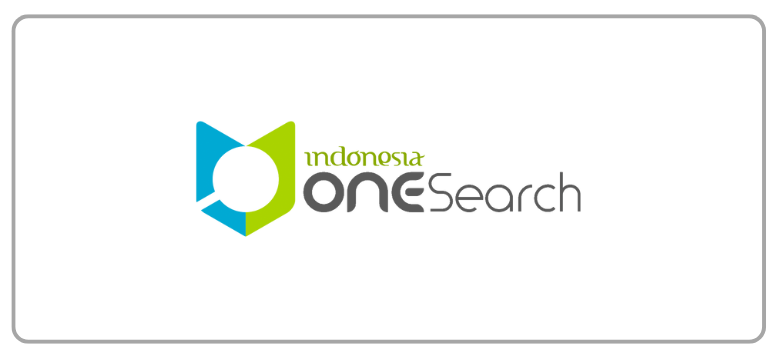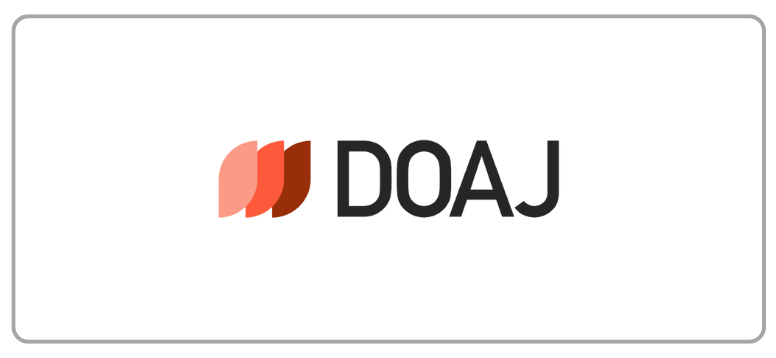Digital Leadership in Driving Work Innovation: The Role of Creativity, Motivation, and Gender
DOI:
https://doi.org/10.21512/tw.v26i1.12572Keywords:
digital leadership, innovative work behavior, problem-solving creativity, intrinsic motivation, genderAbstract
The research aimed to explore the role of digital leadership in promoting innovative work behaviors through the mediation of intrinsic motivation and problem-solving creativity and to analyze differences in influence based on gender. A total of 117 lecturers and education staff at private universities were analyzed through AMOS SEM to test the direct, indirect, and moderation influences of gender. The results show that digital leadership does not have a direct effect on innovative work behavior through intrinsic motivation and problem-solving creativity. Digital leadership has a positive effect on intrinsic motivation, thereby strengthening internal motivation for optimal contribution. Gender analysis reveals that digital leadership has a significant impact on intrinsic motivation and problem-solving creativity, with a stronger effect on women, particularly in increasing their intrinsic motivation. However, the relationship between problem-solving creativity and innovative work behavior remained insignificant. The implications emphasize the importance of strengthening strategic digital leadership to enhance intrinsic motivation and creativity, considering gender-based responses to drive innovative work behaviors.
References
Abbas, S. M., Latif, M., & Sarwar, F. (2024). Digital leadership and innovative work behavior in IT sector: The mediating role of digital entrepreneurial orientation and digital organizational culture. Employee Responsibilities and Rights Journal. https://doi.org/10.1007/s10672-024-09503-7
AlAjmi, M. K. (2022). The impact of digital leadership on teachers’ technology integration during the COVID-19 pandemic in Kuwait. International Journal of Educational Research, 112, 101928. https://doi.org/10.1016/j.ijer.2022.101928
Alakaş, E. Ö. (2024). Digital transformational leadership and organizational agility in digital transformation: Structural equation modeling of the moderating effects of digital culture and digital strategy. The Journal of High Technology Management Research, 35(2), 100517. https://doi.org/10.1016/j.hitech.2024.100517.
Almadana, A. V., Suharnomo, S., & Perdhana, M. S. (2022). Can generational differences and feelings of trust improve knowledge-sharing behavior? Consequences of high-performance work systems. Journal of Workplace Learning, 34(2), 200-214. https://doi.org/10.1108/JWL-05-2021-0058.
Alqhaiwi, Z. O., Koburtay, T., & Karatepe, O. M. (2023). Linking person-job fit and intrinsic motivation to salespeople’s service innovative behavior. Journal of Services Marketing, 37(9), 1186-1200. https://doi.org/10.1108/JSM-04-2023-0154.
Alshahrani, M. A., Yaqub, M. Z., Ali, M., El Hakimi, I., & Salam, M. A. (2025). Could entrepreneurial leadership promote employees’ IWB? The roles of intrinsic motivation, creative self-efficacy, and firms’ innovation climate. International Journal of Innovation Science. https://doi.org/10.1108/IJIS-08-2024-0211
Alt, D., Kapshuk, Y., & Dekel, H. (2023). Promoting perceived creativity and innovative behavior: Benefits of future problem-solving programs for higher education students. Thinking Skills and Creativity, 47, 101201. https://doi.org/10.1016/j.tsc.2022.101201.
Ankli, R. E., & Palliam, R. (2012). Enabling a motivated workforce: Exploring the sources of motivation. Development and Learning in Organizations, 26(2), 7-10. https://doi.org/10.1108/14777281211201169.
Anwar, S., & Saraih, U. N. (2024). Digital leadership in the digital era of education: Enhancing knowledge sharing and emotional intelligence. International Journal of Educational Management, 38(6), 1581-1611. https://doi.org/10.1108/IJEM-11-2023-0540.
Babu, M. D., Prasad, K. B., & Prasad, U. T. (2024). Impact of ambidextrous leadership on innovative work behavior and employee performance in the IT sector. Heliyon, 10(13). https://doi.org/10.1016/j.heliyon.2024.e33124.
Bansal, A., Panchal, T., Jabeen, F., Mangla, S. K., & Singh, G. (2023). A study of human resource digital transformation (HRDT): A phenomenon of innovation capability led by digital and individual factors. Journal of Business Research, 157, 113611. https://doi.org/10.1016/j.jbusres.2022.113611.
Bauwens, R., & Cortellazzo, L. (2024). The different faces of e‑leadership: Six perspectives on leading in the era of digital technologies. Human Resource Management Review, 35(1). https://doi.org/10.1016/j.hrmr.2024.101058.
Benitez, J., Arenas, A., Castillo, A., & Esteves, J. (2022). Impact of digital leadership capability on innovation performance: The role of platform digitization capability. Information & Management, 59(2), 103590. https://doi.org/10.1016/j.im.2022.103590.
Bertão, R. A., Jung, C. H., Chung, J., & Joo, J. (2023). Design thinking: A customized blueprint to train R & D personnel in creative problem-solving. Thinking Skills and Creativity, 48, 101253. https://doi.org/10.1016/j.tsc.2023.101253.
Bogilović, S., Bortoluzzi, G., Černe, M., Ghasemzadeh, K., & Žnidaršič, J. (2021). Diversity, climate, and innovative work behavior. European Journal of Innovation Management, 24(5), 1502-1524. https://doi.org/10.1108/EJIM-03-2020-0100.
Bos-Nehles, A., Renkema, M., & Janssen, M. (2017). HRM and innovative work behavior: a systematic literature review. Personnel Review, 46(7), 1228-1253. https://doi.org/10.1108/PR-09-2016-0257.
Braojos, J., Weritz, P., & Matute, J. (2024). Empowering organizational commitment through digital transformation capabilities: The role of digital leadership and a continuous learning environment. Information Systems Journal, 34(5), 1466-14927. https://doi.org/10.1111/isj.12501.
Chen, P., & Chang, Y.-C. (2024). Incorporating creative problem-solving skills to foster sustainability among graduate students in education management. Cleaner Production Letters, 7, 100082. https://doi.org/10.1016/j.clpl.2024.100082.
Contreras, F., Jauregui, K., & Rank, S. (2024). The intellectual structure of human resource management and digitalization research: A bibliometric-mapping analysis. Journal of Engineering and Technology Management, 73, 101829. https://doi.org/10.1016/j.jengtecman.2024.101829.
Desmet, O. A., & Sternberg, R. J. (2024). Innovative teaching strategies for fostering transformational creativity. Thinking Skills and Creativity, 52, 101543. https://doi.org/10.1016/j.tsc.2024.101543.
Dwivedi, Y. K., Hughes, L., Kar, A. K., Baabdullah, A. M., Grover, P., Abbas, R., Andreini, D., Abumoghli, I., Barlette, Y., Bunker, D., Chandra Kruse, L., Constantiou, I., Davison, R. M., De’, R., Dubey, R., Fenby-Taylor, H., Gupta, B., He, W., Kodama, M., … Wade, M. (2022). Climate change and COP26: Are digital technologies and information management part of the problem or the solution? An editorial reflection and call to action. International Journal of Information Management, 63, 102456. https://doi.org/10.1016/j.ijinfomgt.2021.102456.
El-Kassar, A.-N., Dagher, G. K., Lythreatis, S., & Azakir, M. (2022). Antecedents and consequences of knowledge hiding: The roles of HR practices, organizational support for creativity, creativity, innovative work behavior, and task performance. Journal of Business Research, 140, 1-10. https://doi.org/10.1016/j.jbusres.2021.11.079.
Erhan, T., Uzunbacak, H. H., & Aydin, E. (2022). From conventional to digital leadership: Exploring digitalization of leadership and innovative work behavior. Management Research Review, 45(11), 1524-1543. https://doi.org/10.1108/MRR-05-2021-0338.
Espina-Romero, L., Noroño Sánchez, J., Rojas-Cangahuala, G., Garay, J., Ríos-Parra, D., & Corredoira, J. (2023). Digital Leadership in an Ever-Changing World: A Bibliometric Analysis of Trends and Challenges. Sustainability, 15(17), 13129. https://doi.org/10.3390/su151713129.
Gao, M., Kanwal, S., & Khawar, A. (2024). Catalysts of digital excellence: Unraveling the threads of connectivity, embedment, and visibility in enterprise social media for enhanced task and innovative performances. Acta Psychologica, 248, 104396. https://doi.org/10.1016/j.actpsy.2024.104396.
Gao, P., & Gao, Y. (2024). How does digital leadership foster employee innovative behavior: A cognitive–affective processing system perspective. Behavioral Sciences, 14(5), 362. https://doi.org/10.3390/bs14050362.
Garzón-Lasso, F., Serrano-malebrán, J., Arenas-arango, S., Molina, C., & Serrano-malebrán, J. (2024). Full range leadership style and its effect on effectiveness, employee satisfaction, and extra effort : An empirical study. Frontiers in Psychology, 15. https://doi.org/10.3389/fpsyg.2024.1380935.
Gozali, I., & Latan, H. (2015). Partial Least Squares: Konsep, teknik, dan aplikasi menggunakan program SmartPLS3.0. Badan Penerbit UNDIP.
Gulzar, M., Smolander, K., Ali, A., & Naqvi, B. (2024). Motivational factors and Challenges in the adoption of latest digital technology in educational institutes: A thematic analysis. Procedia Computer Science, 239, 1670-1677. https://doi.org/10.1016/j.procs.2024.06.344.
Havidz, H. B. H., & Gupron, G. (2019). Determination of employee performance: Perceived organizational support, communication, and leadership styles (A human resource management literature study). Dinasti International Journal of Digital Business Management, 1(1), 116-131.
Kane, G., Phillips, A., Copulsky, J., & Andrus, G. (2019). The technology fallacy: How people are the real key to digital transformation. MIT Press. https://doi.org/10.7551/mitpress/11661.001.0001
Koburtay, T., Syed, J., & Haloub, R. (2019). Congruity between the female gender role and the leader role: A literature review. European Business Review, 31(6), 831-848. https://doi.org/10.1108/EBR-05-2018-0095.
Layyinah, A. G., & Subiyanto, D. (2022). The influence of training roles, self-efficacy, and creative problem-solving on improving employee performance. Journal of Management and Islamic Finance, 2(1), 12-24. https://doi.org/10.22515/jmif.v2i1.4346.
Lechermeier, J., Fassnacht, M., & Wagner, T. (2020). Testing the influence of real-time performance feedback on employees in digital services. Journal of Service Management, 31(3), 345-371. https://doi.org/10.1108/JOSM-10-2018-0341.
Li, M., & Xiao, W. (2023). Research on the effect of e-leadership on employee innovation behavior in the context of “self” and “relationship.” Journal of Organizational and End User Computing (JOEUC), 35(1), 1-20. https://doi.org/10.4018/JOEUC.317090.
Liao, H-T., Pan, C.-L., & Wu, Z. (2024). Digital Transformation and innovation and business ecosystems: A bibliometric analysis for conceptual insights and collaborative practices for ecosystem innovation. International Journal of Innovation Studies, 8(4), 406-431. https://doi.org/10.1016/j.ijis.2024.04.003.
Lin, Q. (2024). Digital leadership: A systematic literature review and future research agenda. European Journal of Innovation Management. https://doi.org/10.1108/EJIM-07-2023-0522.
Liu, X., Huang, Y., Kim, J., & Na, S. (2023). How ethical leadership cultivates innovative work behaviors in employees? Psychological safety, work engagement, and openness to experience. Sustainability, 15(4). https://doi.org/10.3390/su15043452
Lubis, A. S., Lumbanraja, P., Absah, Y., & Silalahi, A. S. (2022). Human resource competency 4.0 and its impact on Bank Indonesia employees’ readiness for transformational change. Journal of Organizational Change Management, 35(4/5), 749-779. https://doi.org/10.1108/JOCM-02-2021-0045.
Lusiani, M., Abidin, Z., Fitrianingsih, D., Yusnita, E., Adiwinata, D., Rachmaniah, D., Mukhlasin, Fauzi, A., & Purwanto, A. (2020). Effect of servant, digital and green leadership toward business performance: Evidence from Indonesian manufacturing. Systematic Reviews in Pharmacy, 11(11), 1351-1361.
Lynn Pulley, M., & Sessa, V. I. (2001). E‐leadership: Tackling complex challenges. Industrial and Commercial Training, 33(6), 225-230. https://doi.org/10.1108/00197850110405379.
Maisyaroh, M., Juharyanto, J., Wiyono, B. B., Nawi, A. M., Adha, M. A., & Lesmana, I. (2024). Unveiling the nexus of leadership, culture, learning independence, passion trend-based learning, and teacher creativity in shaping digital student skills. Social Sciences & Humanities Open, 9, 100884. https://doi.org/10.1016/j.ssaho.2024.100884.
Maj, J. (2023). Organizational culture and leadership as facilitators of creativity and innovation: Insights from the ICT sector in Poland in a post-COVID-19 reality. Journal of Economics and Management, 45(1), 182-215. https://doi.org/10.22367/jem.2023.45.09.
Malewska, K., Cyfert, S., Chwiłkowska-Kubala, A., Mierzejewska, K., & Szumowski, W. (2024). The missing link between digital transformation and business model innovation in energy SMEs: The role of digital organizational culture. Energy Policy, 192, 114254. https://doi.org/10.1016/j.enpol.2024.114254.
Malik, M., Raziq, M. M., Sarwar, N., & Tariq, A. (2025). Digital leadership, business model innovation, and organizational change: Role of leader in steering digital transformation. Benchmarking: An International Journal, 32(5), 1632-1662. https://doi.org/10.1108/BIJ-04-2023-0283.
Marcel, Gaol, F. L., Supangkat, S. H., & Ranti, B. (2024). Toward digital transformation adoption: A conceptual framework from transformational leadership perspective. Procedia Computer Science, 234, 1175-1182. https://doi.org/10.1016/j.procs.2024.03.113.
Memon, K. R., & Ooi, S. K. (2023). Identifying digital leadership’s role in fostering competitive advantage through responsible innovation: A SEM-Neural network approach. Technology in Society, 75, 102399. https://doi.org/10.1016/j.techsoc.2023.102399.
Mihardjo, L. W. W., Sasmoko, S., Alamsjah, F., & Elidjen, E. (2019). Digital leadership impacts on developing dynamic capability and strategic alliance based on market orientation. Polish Journal of Management Studies, 19(2), 285-297. https://doi.org/10.17512/pjms.2019.19.2.24.
Minh-Duc, L., & Huu-Lam, N. (2019). Transformational leadership, customer citizenship behavior, employee intrinsic motivation, and employee creativity. Journal of Asian Business and Economic Studies, 26(2), 286-300. https://doi.org/10.1108/JABES-10-2018-0070.
Mittone, L., Morreale, A., & Vu, T.-T.-T. (2022). What drives innovative behavior?- An experimental analysis of risk attitudes, creativity, and performance. Journal of Behavioral and Experimental Economics, 98, 101868. https://doi.org/10.1016/j.socec.2022.101868.
Mo, Z., Liu, Y., Lu, C., & Yu, J. (2023). Influences of industrial internet platform firms’ ESG performance and digital leadership on user firms’ innovation performance: The mediating role of inter-firm trust. Journal of Digital Economy, 2, 204-220. https://doi.org/10.1016/j.jdec.2024.01.002.
Papachristopoulos, K., Dubord, M.-A. G., Jauvin, F., Forest, J., & Coulombe, P. (2023). Positive impact, creativity, and innovative behavior at work: The mediating role of basic needs satisfaction. Behavioral Sciences, 13(12), 984. https://doi.org/10.3390/bs13120984.
Park, R. (2023). What if employees with intrinsic work values are given autonomy in worker co-operatives? Integration of the job demands-resources model and supplies–values fit theory. Personnel Review, 52(3), 724-744. https://doi.org/10.1108/PR-05-2021-0362.
Ridwan, M., Fiodian, V. Y., Religia, Y., & Hardiana, S. R. (2024). Investigating the effect of intrinsic and extrinsic motivation in shaping digital entrepreneurial intention: The mediating role of self-efficacy. Asia Pacific Journal of Innovation and Entrepreneurship. https://doi.org/10.1108/APJIE-02-2024-0036.
Saether, E. A. (2019). Motivational antecedents to high-tech R&D employees’ innovative work behavior: Self-determined motivation, person-organization fit, organization support of creativity, and pay justice. The Journal of High Technology Management Research, 30(2), 100350. https://doi.org/10.1016/j.hitech.2019.100350.
Sağbaş, M., & Erdoğan, F. A. (2022). Digital leadership: A systematic conceptual literature review. İstanbul Kent Üniversitesi İnsan Ve Toplum Bilimleri Dergisi, 3(1), 17-35.
Saif, N., Amelia, Goh, G. G. G., Rubin, A., Shaheen, I., & Murtaza, M. (2024). Influence of transformational leadership on innovative work behavior and task performance of individuals: The mediating role of knowledge sharing. Heliyon, 10(11). https://doi.org/10.1016/j.heliyon.2024.e32280.
Sandra, D. (2021). Using digital technology to evaluate heart coherence in craniosacral therapy as an indicator of spiritual leadership. European Journal of Integrative Medicine, 44, 101329. https://doi.org/10.1016/j.eujim.2021.101329.
Schiuma, G., Schettini, E., Santarsiero, F., & Carlucci, D. (2022). The transformative leadership compass: Six competencies for digital transformation entrepreneurship. International Journal of Entrepreneurial Behavior & Research, 28(5), 1273-1291. https://doi.org/10.1108/IJEBR-01-2021-0087.
Senadjki, A., Au Yong, H. N., Ganapathy, T., & Ogbeibu, S. (2024). Unlocking the potential: The impact of digital leadership on firms’ performance through digital transformation. Journal of Business and Socio-Economic Development, 4(2), 161-177. https://doi.org/10.1108/jbsed-06-2023-0050.
Shubina, I., & Kulakli, A. (2019). Critical thinking, creativity and gender differences for knowledge generation in education. Literacy Information and Computer Education Journal (LICEJ), 10(1), 3086-3093. https://doi.org/10.20533/licej.2040.2589.2019.0405
Singh, A., & Hess, T. (2020). How chief digital officers promote the digital transformation of their companies. In R. D. Galliers, D. E. Leidner, & B. Simeonova (Eds.), Strategic information management: Theory and practice (pp. 202-220). Routledge. https://doi.org/10.4324/9780429286797-9
Sode, R., & Chenji, K. (2024). The mediating role of workplace spirituality: Exploring the relationship between, self-transcendence, spiritual transcendence, and innovative work behavior. Acta Psychologica, 245, 104228. https://doi.org/10.1016/j.actpsy.2024.104228.
Stofberg, L., Strasheim, A., & Koekemoer, E. (2021). Digitalization in the workplace: The role of technology on employee engagement and creativity teams. In N. Ferreira, I. L. Potgieter, & M. Coetzee (Eds.), Agile coping in the digital workplace: Emerging issues for research and practice (pp. 231-x257). Springer International Publishing. https://doi.org/10.1007/978-3-030-70228-1_12.
Tian, H., Han, J., Sun, M., & Lv, X. (2025). Keeping pace with the times: Research on the impact of digital leadership on radical green innovation of manufacturing enterprises. European Journal of Innovation Management, 28(3), 900-927. https://doi.org/10.1108/EJIM-11-2022-0647.
Verhoef, P. C., Broekhuizen, T., Bart, Y., Bhattacharya, A., Qi Dong, J., Fabian, N., & Haenlein, M. (2021). Digital transformation: A multidisciplinary reflection and research agenda. Journal of Business Research, 122, 889-901. https://doi.org/10.1016/j.jbusres.2019.09.022.
Wang, G., Mansor, Z. D., & Leong, Y. C. (2024). Linking digital leadership and employee digital performance in SMEs in China: The chain-mediating role of high-involvement human resource management practice and employee dynamic capability. Heliyon, 10(16), e36026. https://doi.org/10.1016/j.heliyon.2024.e36026.
Wulandari, F., & Subiyanto, D. (2024). The role of transformational leadership in critical situations: Problem-solving performance in public service as the outcome. Quality - Access to Success, 25(200), 179-187. https://doi.org/10.47750/QAS/25.200.19.
Yalçın, V., & Erden, Ş. (2021). The effect of STEM activities prepared according to the design thinking model on preschool children’s creativity and problem-solving skills. Thinking Skills and Creativity, 41, 100864. https://doi.org/10.1016/j.tsc.2021.100864.
Downloads
Published
How to Cite
Issue
Section
License
Copyright (c) 2025 Anisa Permata Hastiti, Didik Subiyanto, Syamsul Hadi

This work is licensed under a Creative Commons Attribution-ShareAlike 4.0 International License.
Authors who publish with this journal agree to the following terms:
a. Authors retain copyright and grant the journal right of first publication with the work simultaneously licensed under a Creative Commons Attribution License - Share Alike that allows others to share the work with an acknowledgment of the work's authorship and initial publication in this journal.
b. Authors are able to enter into separate, additional contractual arrangements for the non-exclusive distribution of the journal's published version of the work (e.g., post it to an institutional repository or publish it in a book), with an acknowledgment of its initial publication in this journal.
c. Authors are permitted and encouraged to post their work online (e.g., in institutional repositories or on their website) prior to and during the submission process, as it can lead to productive exchanges, as well as earlier and greater citation of published work.
USER RIGHTS
All articles published Open Access will be immediately and permanently free for everyone to read and download. We are continuously working with our author communities to select the best choice of license options, currently being defined for this journal as follows: Creative Commons Attribution-Share Alike (CC BY-SA)
